FASHIONING IDENTITY
Mola Textiles of Panamá
THE CLEVELAND MUSEUM OF ART
through October 3, 2021
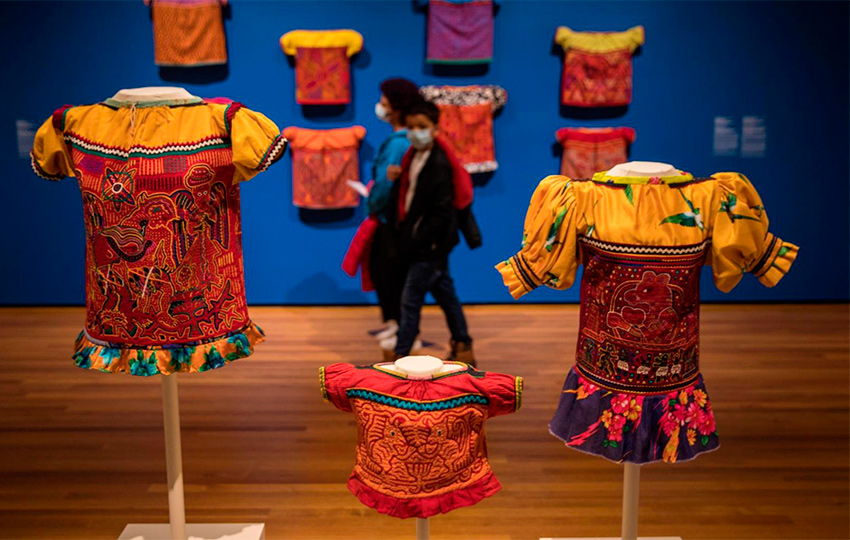
For the Guna women of Panamá, the Mola, a hand-sewn cotton blouse
and a key component of traditional dress, is a powerful symbol
of culture and identity
The History of Mola
The Guna (formerly Kuna) are an indigenous people living on the Caribbean coast of Panamá. Guna women began creating molas by the early 20th century. When the Panamanian government sought to suppress their culture, the Guna rebelled in 1925, rallying around their right to make and wear molas as a statement of their independence.
Molas are crafted from masterfully hand-sewn cotton panels that are made in pairs and sewn into blouses. The panels feature a wide array of vibrantly colored, often whimsical subjects, ranging from geometric abstraction to motifs based on the natural world, Guna life and mythology, and Western popular culture.
Fashioning Identity: Mola Textiles of Panamá presents both individual panels and complete blouses (both are known as molas) and celebrates several gifts that have entered the museum’s collection over the years.
HIGHLIGHTS
Santa Claus Mola Blouse
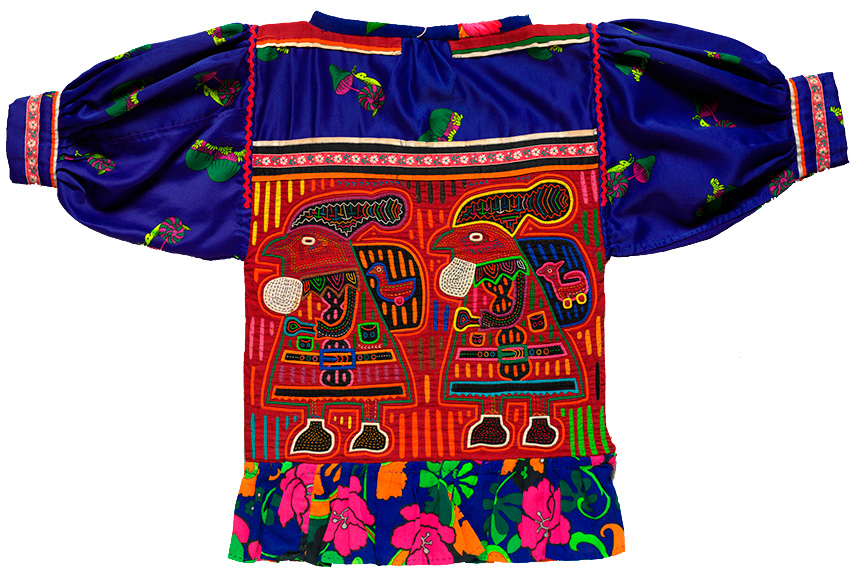
Detail of Santa Claus Mola Blouse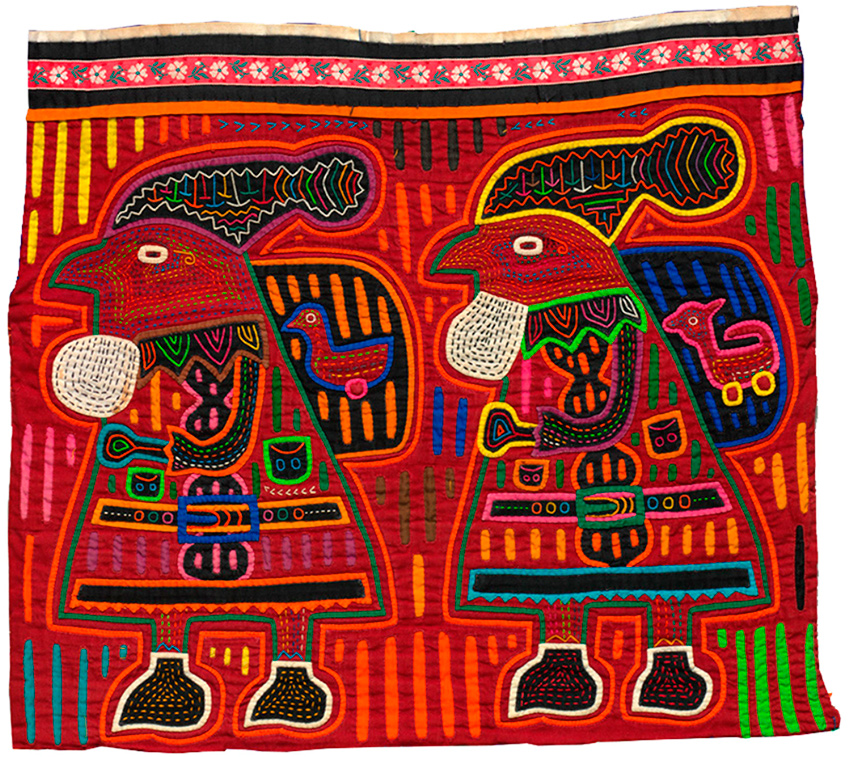
Santa Claus Mola Blouse, c. 1986. Republic of Panamá, Gunayala Comarca, Guna people. Cotton, synthetic fiber: reverse appliqué, appliqué, embroidery.; overall: 62.2 x 92.7 cm (24 1/2 x 36 1/2 in.). The Cleveland Museum of Art, Gift of Jeanne Marie Stumpf, Ph.D. 2010.800
Matilda Mola Blouse 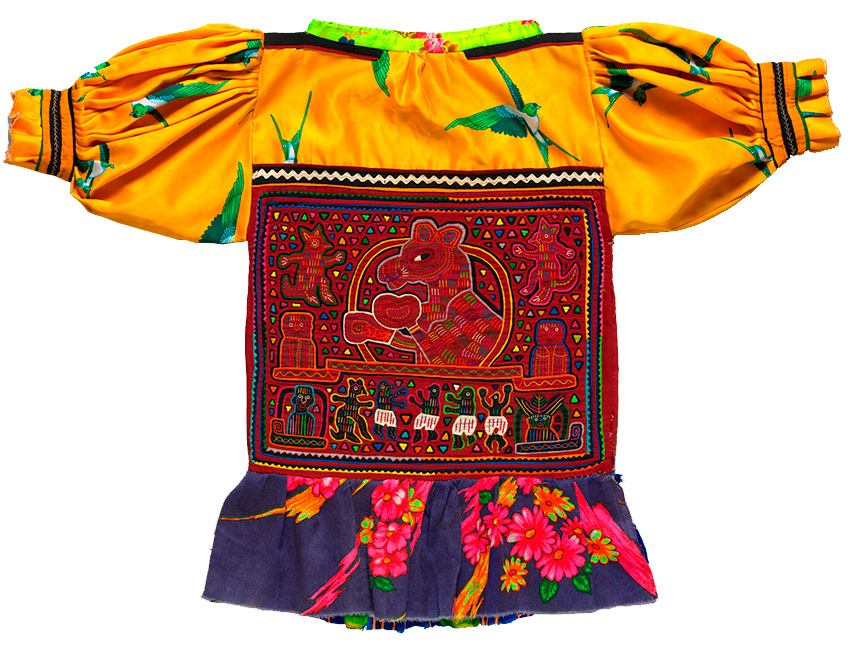
Detail of Matilda Mola Blouse
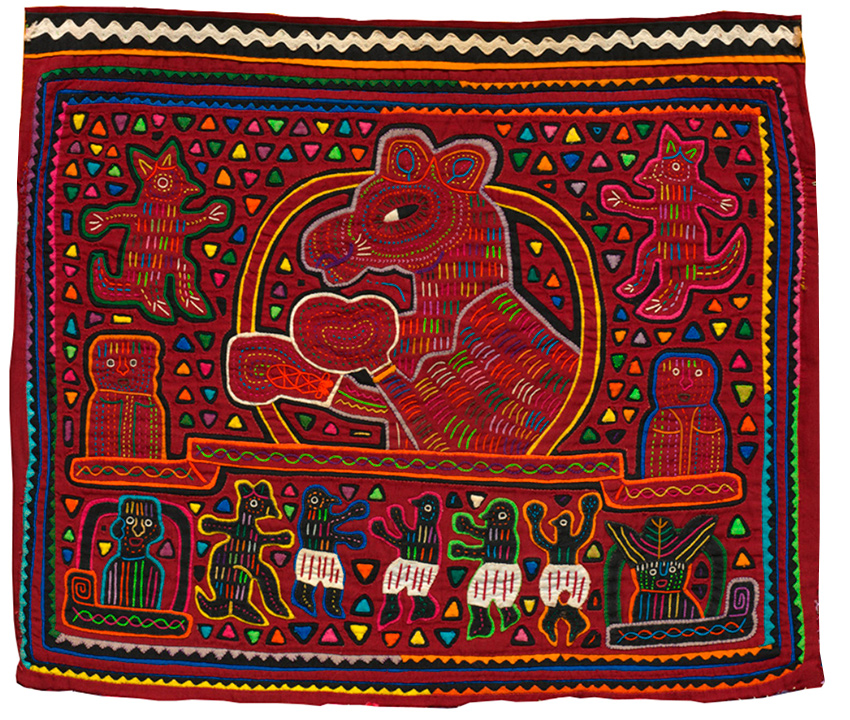
Matilda Mola Blouse, after 1978. Republic of Panamá, Gunayala Comarca, Guna people. Cotton, synthetic fiber: reverse appliqué, appliqué, embroidery; overall: 64.2 x 89.5 cm (25 1/4 x 35 1/4 in.). The Cleveland Museum of Art, Gift of Jeanne Marie Stumpf, Ph.D. 2010.799
Scorpion Mola Blouse
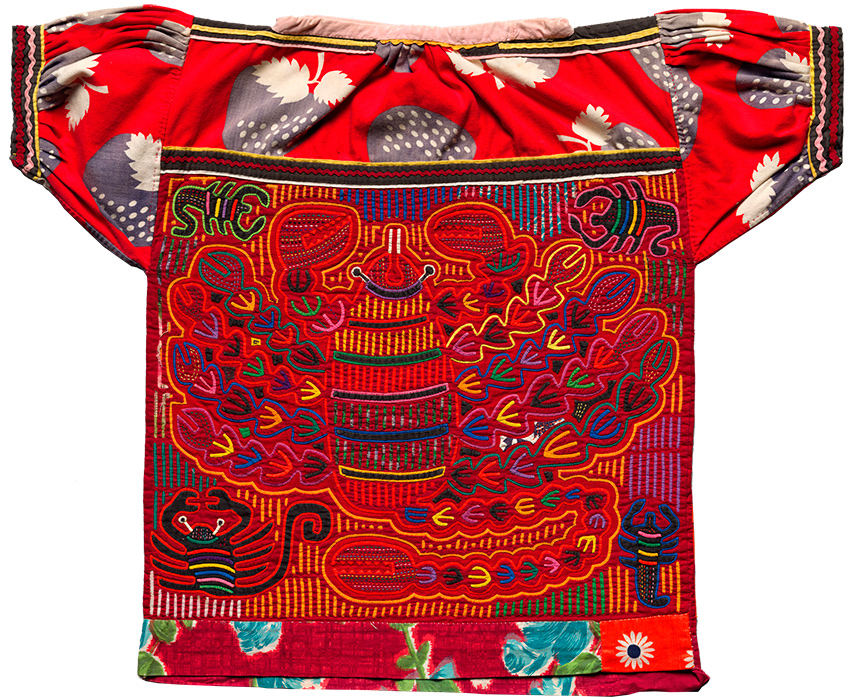
Detail of Scorpion Mola Blouse
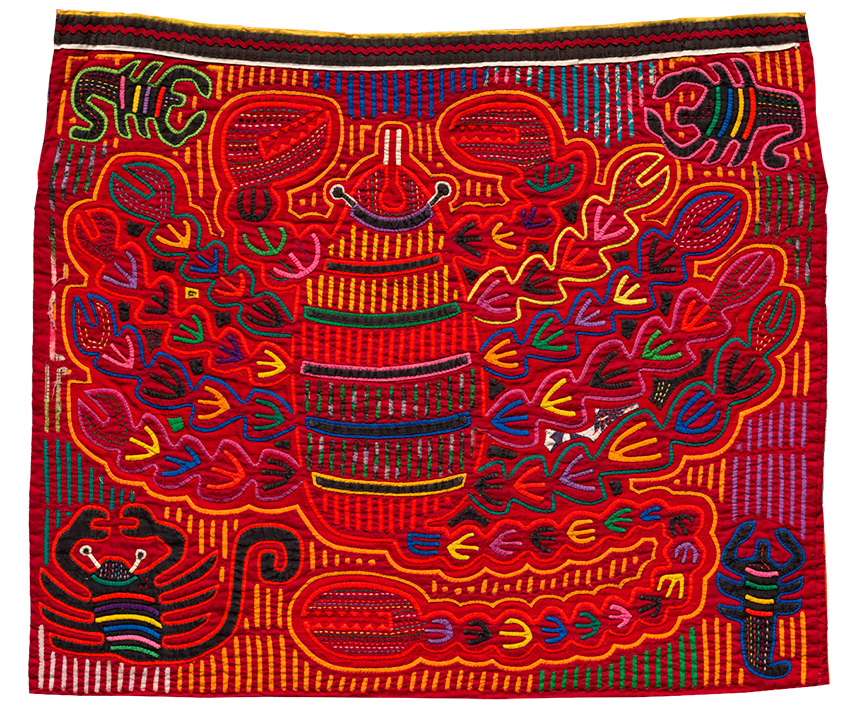
Scorpion Mola Blouse, mid-1900s. Republic of Panamá, Gunayala Comarca, Guna people. Cotton: reverse appliqué, appliqué, embroidery; overall: 57.2 x 68.6 cm (22 1/2 x 27 in.). The Cleveland Museum of Art, Gift of Mr. and Mrs. Edward Altmann 1971.1033
Large Bird Mola Blouse
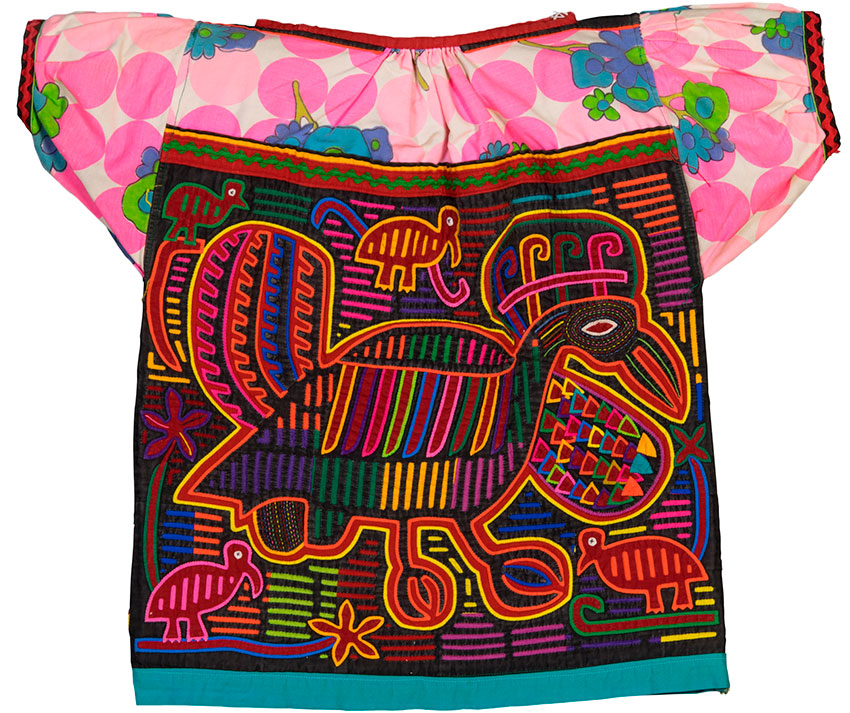
Detail of Large Bird Mola Blouse
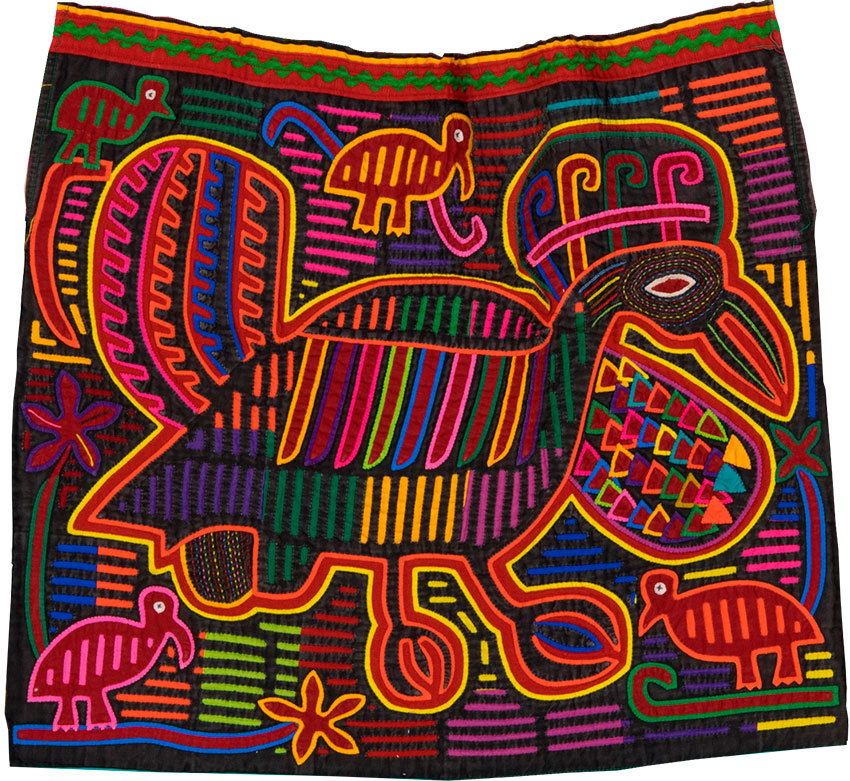
Large Bird Mola, c. 1950–70. Cotton; reverse appliqué, appliqué, embroidery; 43 x 49.5 cm. Gift of Mr. and Mrs. Edward Kelley, 1972.10
ANIMALS AS LEITMOTIV
Enclosed Bird Mola Panel
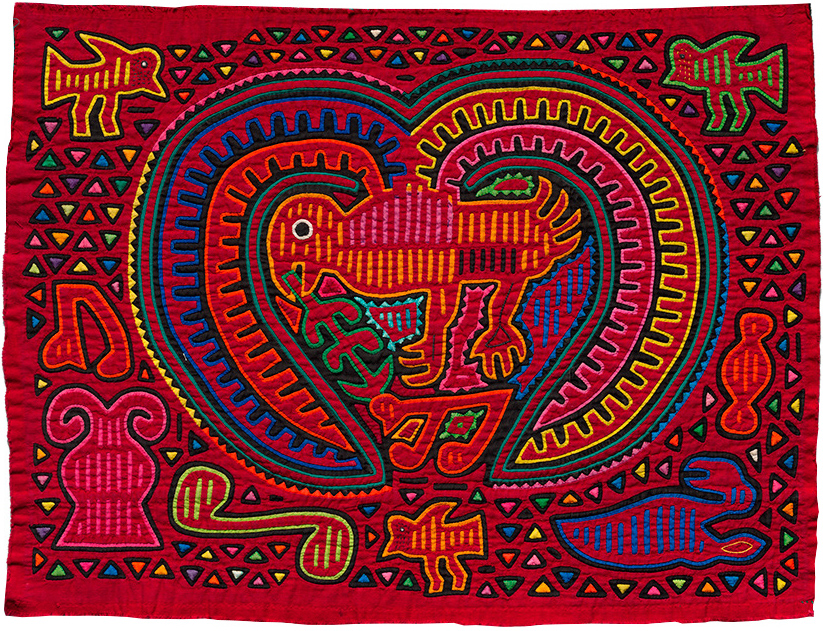
Enclosed Bird Mola Panel, mid 1900s. Republic of Panamá, Gunayala Comarca, Guna people, Sugtupo community. Cotton: reverse appliqué; overall: 44 x 57.2 cm (17 5/16 x 22 1/2 in.). The Cleveland Museum of Art, Gift of Dr. and Mrs. F. Louis Hoover 1971.206
Rampant Lions Mola Panel

Rampant Lions Mola Panel, c. 1950–70. Republic of Panamá, Gunayala Comarca, Guna people, Gardi Coiba community. Cotton: reverse appliqué, appliqué, embroidery; overall: 37.2 x 46 cm (14 5/8 x 18 1/8 in.). The Cleveland Museum of Art, Gift of Dr. and Mrs. F. Louis Hoover 1971.197
Two Birds Mola Panel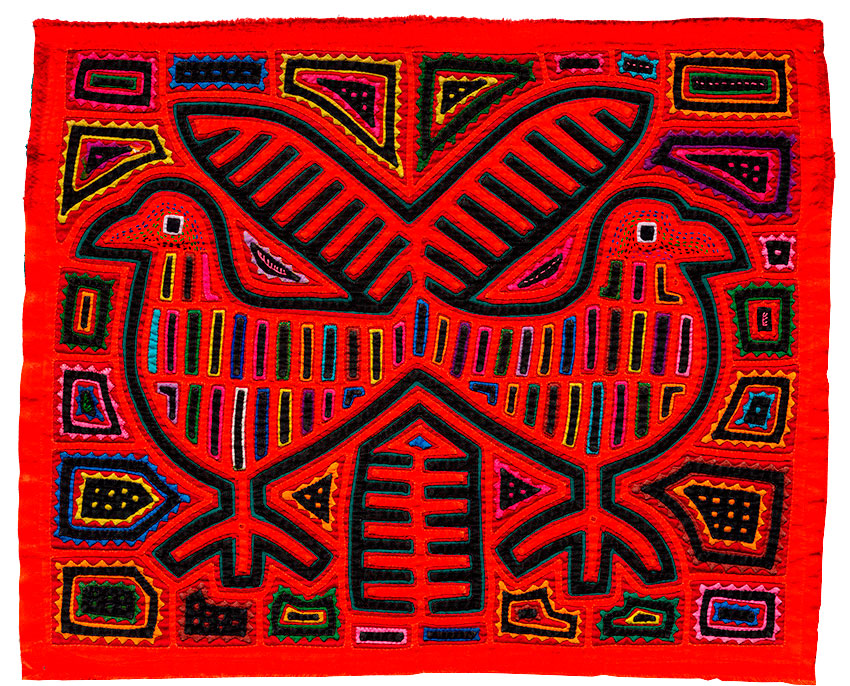
Two Birds Mola Panel, c. 1950-1970. Republic of Panamá, Gunayala Comarca, Wissubwala, Guna people. Cotton: reverse appliqué, appliqué, embroidery; overall: 39.5 x 47.5 cm (15 9/16 x 18 11/16 in.). The Cleveland Museum of Art, Gift of Dr. and Mrs. F. Louis Hoover 1971.213
Crab Mola Panel
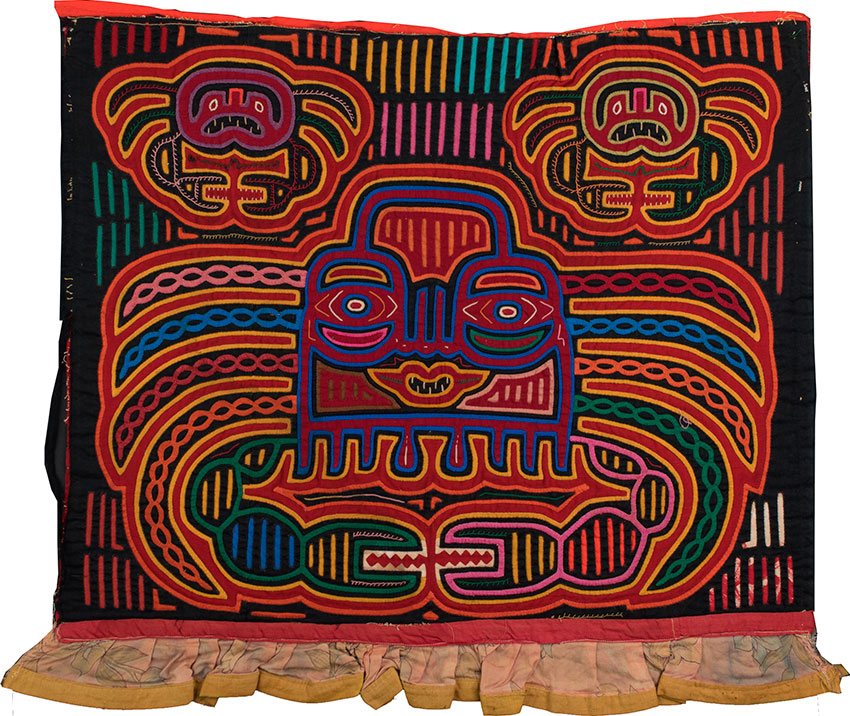
Crab Mola Panel, mid-1900s. Sasardi Muladub community. Cotton; reverse appliqué, appliqué, embroidery; 44.5 x 48.3 cm. [23] Denison Museum, Denison University, Gift of Dr. Clyde Keeler, 1972.341
Bullwinkle J. Moose Mola Panel
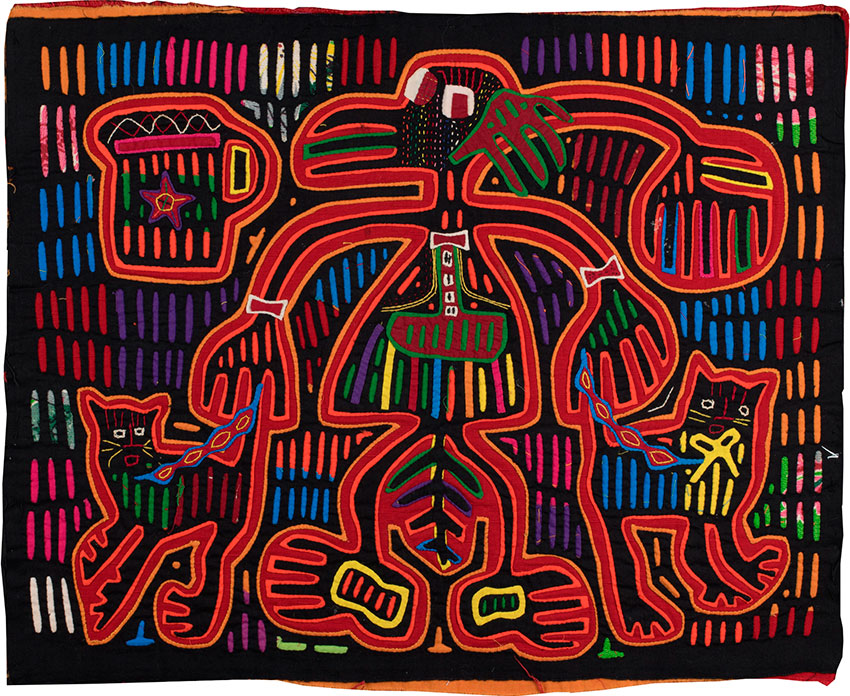
Bullwinkle J. Moose Mola Panel, c. 1960s. Gardi islands. Cotton; reverse appliqué, appliqué, embroidery; 38 x 47 cm. Gift of Dr. Clyde Keeler, 1972.328
INTRINCATE ABSTRACTIONS AS A LEITMOTIF
Mola Panel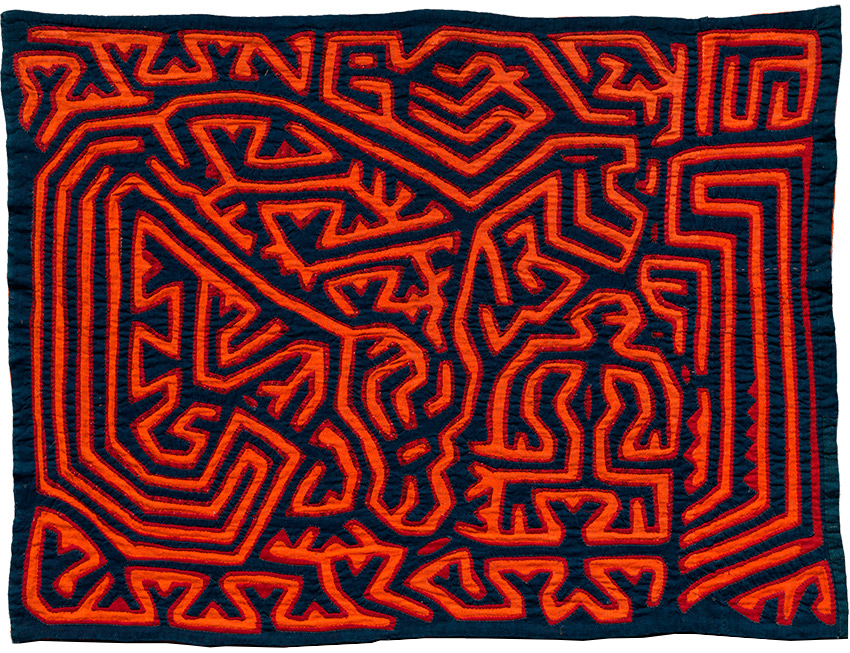
Mola Panel, early 1900s. Republic of Panamá, Gunayala Comarca, Guna people. Cotton: reverse appliqué; overall: 50.8 x 68.6 cm (20 x 27 in.). The Cleveland Museum of Art, Gift of Dorothy Bulkley 1958.218
Basket Mola Panel (Garba Mor)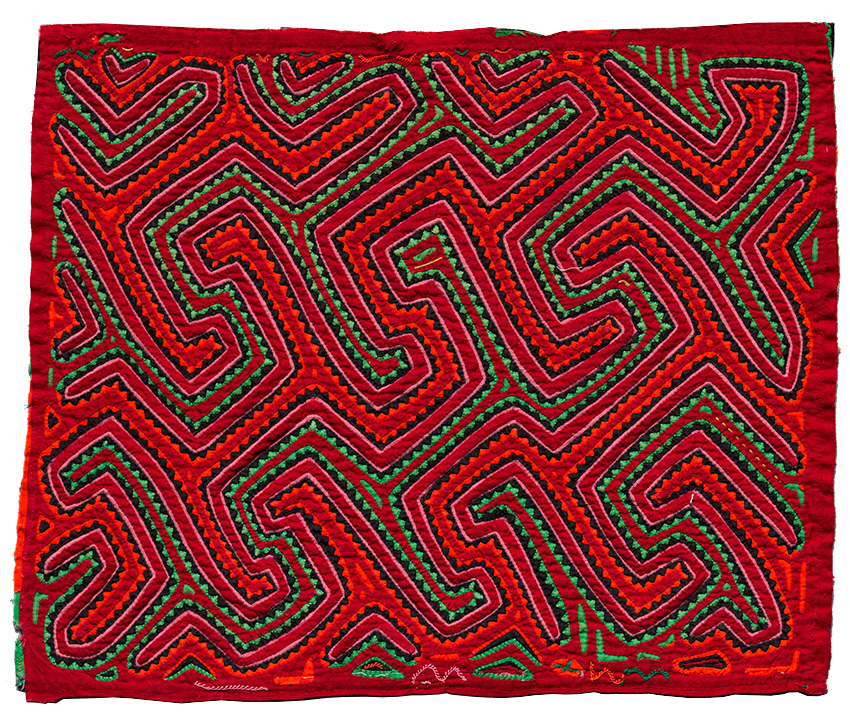
Basket Mola Panel (Garba Mor), c. 1950–70. Republic of Panamá, Gunayala Comarca, Guna people, Urgandi community. Cotton: reverse appliqué, appliqué, embroidery; overall: 32.5 x 39 cm (12 13/16 x 15 3/8 in.). The Cleveland Museum of Art, Gift of Dr. and Mrs. F. Louis Hoover 1971.211
Letters Mola Panel
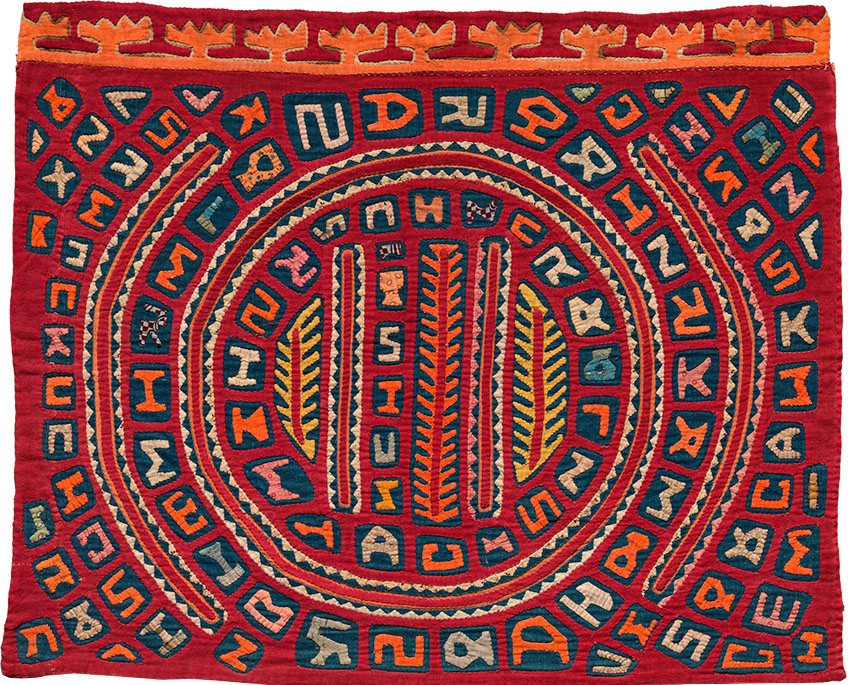
Letters Mola Panel, c. 1920s. Republic of Panamá, Gunayala Comarca, Guna people. Cotton: reverse appliqué, appliqué; overall: 50.8 x 63.5 cm (20 x 25 in.). The Cleveland Museum of Art, Gift of Julia Raymond 1930.14
Basket Mola Panel (Garba Mor)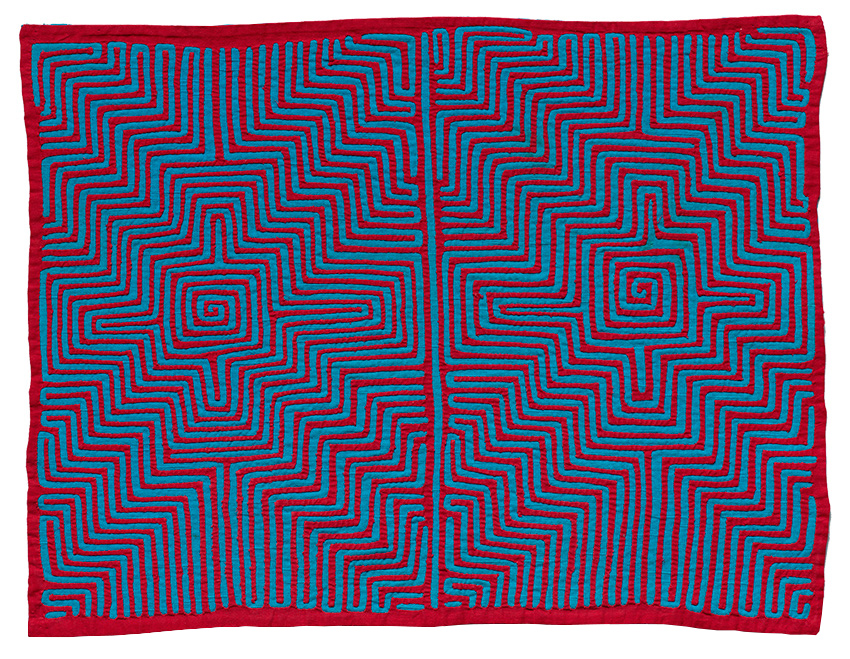
Basket Mola Panel (Garba Sor Mor), mid-1900s. Cotton; reverse appliqué; 34.9 x 46.3 cm. The Harold T. Clark Educational Extension Fund, 1971.1012
Hook Mola Panel (Ake Mor)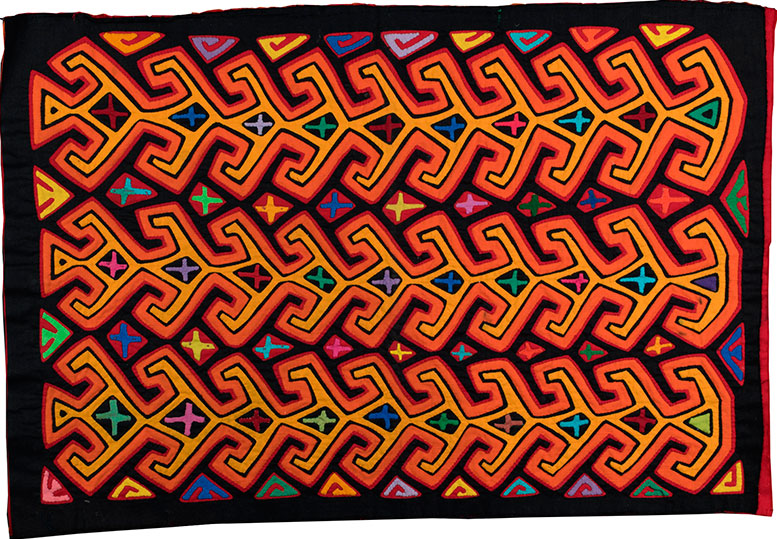
Hook Mola Panel (Ake Mor), mid-1900s. Ankela Rivera (Guna, Agligandi community, active mid-1900s). Cotton; reverse appliqué, appliqué; 35.5 x 53.5 cm. Gift of Dr. Clyde Keeler, 1972.357
Knee Mola Panel (Yokor Mor)
Knee Mola Panel (Yokor Mor), mid-1900s. Sasardi Muladub community. Cotton; reverse appliqué, appliqué; 37 x 49 cm. Gift of Dr. Clyde Keeler, 1972.299
PEOPLE AS LEITMOTIF
Adam and Eve Mola
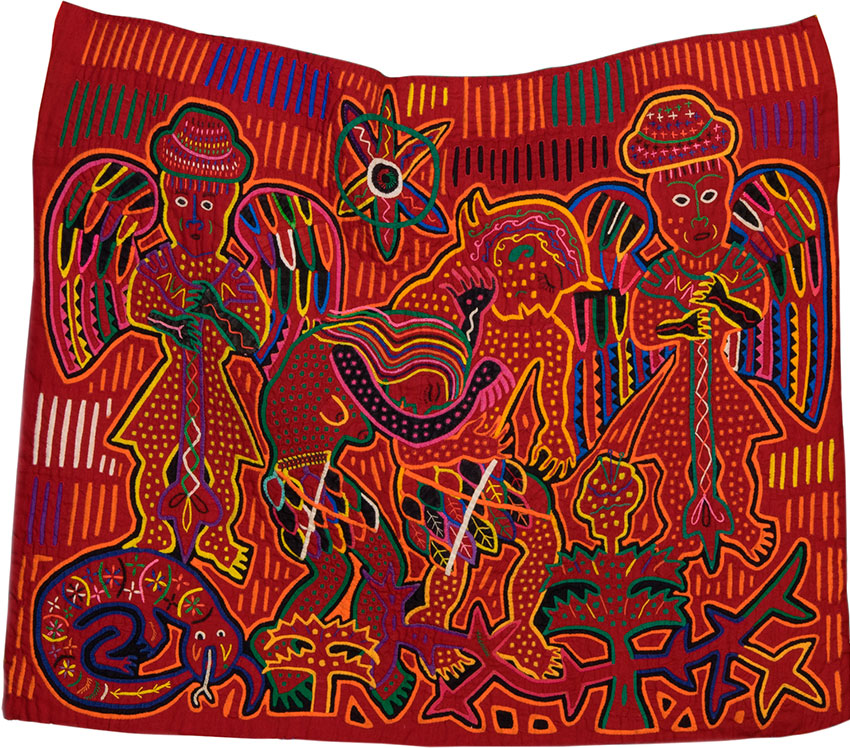
Adam and Eve Mola, before 1968. Gardi islands. Cotton, synthetic fiber; reverse appliqué, appliqué, embroidery; 55.9 x 66 cm. Gift of Dr. Clyde Keeler, 1972.358
Liberal Party Political Mola Panels (pair)
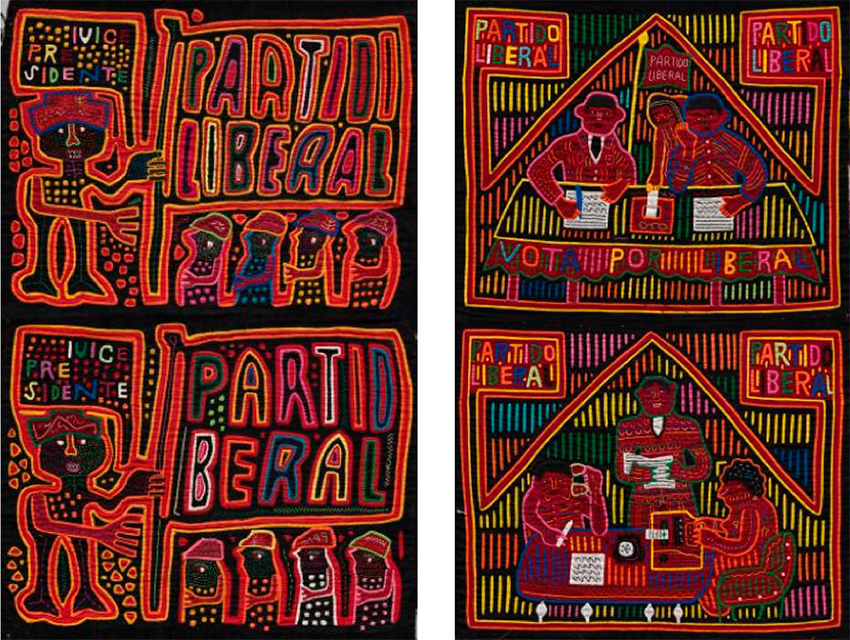
LEFT: Liberal Party Political Mola Panels (pair), mid-1980s. Cotton; reverse appliqué, appliqué, embroidery; 67.3 x 44.5 cm. Gift of Jeanne Marie Stumpf, Ph.D., 2010.801.
RIGHT: Liberal Party Political Mola Panels (pair), mid-1980s. Cotton; reverse appliqué, appliqué, embroidery; 72.4 x 47.4 cm. Gift of Jeanne Marie Stumpf, Ph.D., 2010.802
The Guna People
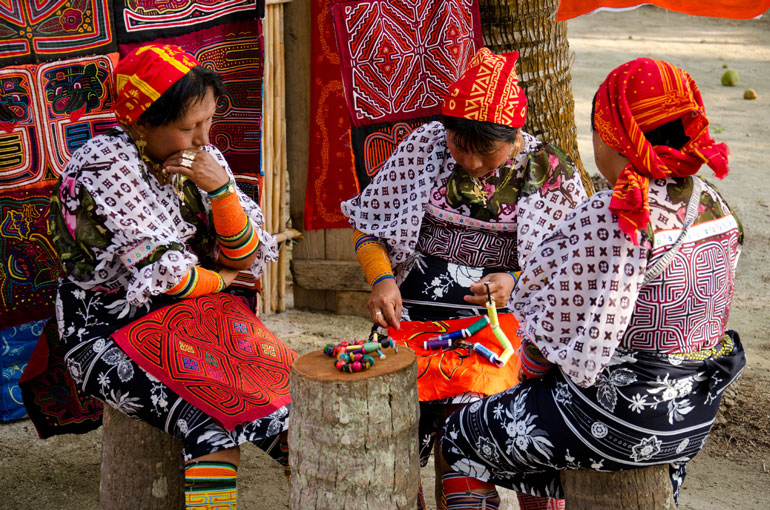
Collaborative discussion is an important part of the mola-making process. Photo: Alfredo Maiquez
“A women’s art form, molas serve as visual embodiments of the strength and survival of Guna identity,” said William Griswold, director of the Cleveland Museum of Art. “At the same time, they are practical elements of daily life as clothing and expressions of personal individuality and creativity subject to changing fashion trends from one generation to the next. Fashioning Identity: Mola Textiles of Panamá examines the mola’s complex role in Guna society and demonstrates the way they blend tradition and constant innovation.”
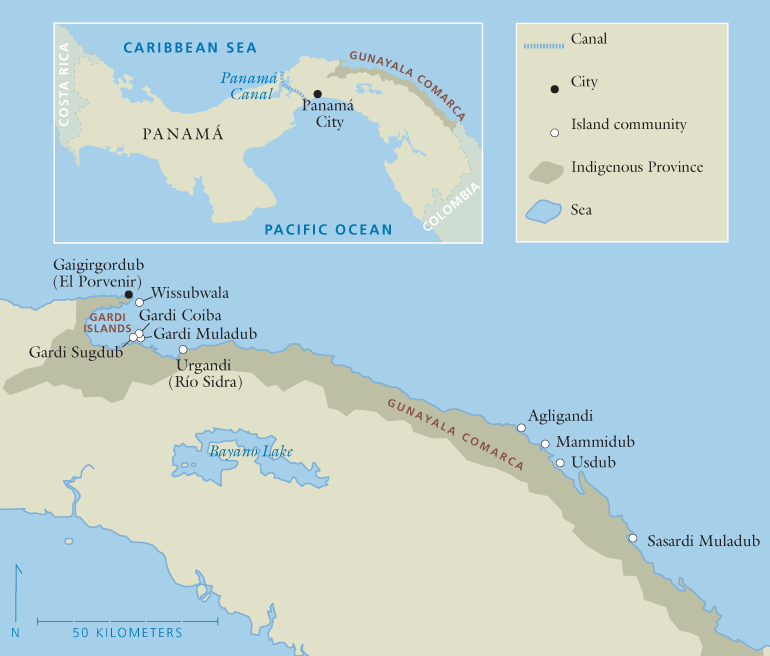 “Strong expressions of duality, repetition, and equilibrium are evident in mola imagery, both in single panels and those comprising the front and back of a blouse. Driven by these and other aesthetic values along with a spirited practice of artistic critique, Guna women are passionate about making ever more innovative mola designs that continue to push the boundaries of their artistic tradition,” said Andrea Vazquez de Arthur, who curated the exhibition while serving as the museum’s first Mary and Leigh Carter Director’s Research Fellow.
“Strong expressions of duality, repetition, and equilibrium are evident in mola imagery, both in single panels and those comprising the front and back of a blouse. Driven by these and other aesthetic values along with a spirited practice of artistic critique, Guna women are passionate about making ever more innovative mola designs that continue to push the boundaries of their artistic tradition,” said Andrea Vazquez de Arthur, who curated the exhibition while serving as the museum’s first Mary and Leigh Carter Director’s Research Fellow.
The exhibition also features generous loans from Denison University, which holds one of the most important Guna collections in the United States. The molas on display span distinct periods of Guna history, from the era of the 1925 revolution to the 1980s.
Bilingual exhibition. The exhibition is accompanied by bilingual (English/Spanish) gallery labels, as well as a bilingual booklet that is available in the gallery and on the CMA website.
VIRTUAL PROGRAMMING
Desktop Dialogue: Making and Meaning in Mola Textiles. How do materials and fabrication processes convey meaning in a work of art or design? Listen as CMA research fellow Andrea Vazquez de Arthur and museum guide Leonardo Pérez Carreño from the Museo de la Mola in Panamá City, Panamá, discuss making and meaning in molas, a key component of traditional dress among indigenous Guna women and the subject of the exhibition, Fashioning Identity: Mola Textiles of Panamá. VISIT https://youtu.be/jtEHYLhlpv4
Close Looking at a Distance: Stitching Complexity. Join program host Key Jo Lee and CMA research fellow Andrea Vazquez de Arthur for a deep and guided exploration of a single mola, made using appliqué and reverse appliqué techniques. Learn about these processes and their complex associations with the Guna understanding of the universe. VISIT https://youtu.be/1j_JMVctI5s
Principal support is provided by the Sandy and Sally Cutler Strategic Opportunities Fund. Additional support is provided by the Womens Council of the Cleveland Museum of Art.
THE CLEVELAND MUSEUM OF ART
11150 East Boulevard, Cleveland, Ohio 44106,
216-421-7350 888-CMA-0033
https://www.clevelandart.org/